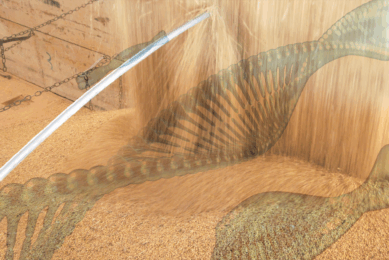‘Time is running out: Grain sector urgently needs clear EUDR (deforestation) requirements’

The European Deforestation Free Supply Chains regulation applies from December 31. From that date, companies must meet various requirements, but much is still unclear, says Caroline Emmen, director of the Committee of Grain Traders.
According to the European Deforestation Free Supply Chains (EUDR) regulation, companies must comply with the EUDR requirements from December 31 of this year. In short, from that date onwards, it must be demonstrable for the commodities soy, palm oil, meat, cocoa, rubber, wood and coffee that production from 2020 did not contribute to deforestation.
So far so good. After all, the importers and traders who are members of the Committee of Grain Traders endorse the objective of this EU regulation. Minimising global deforestation and forest degradation as a result of the production of the aforementioned raw materials.

What is unclear?
However, more than a year after the Regulation came into effect and only a few months before December 31, there is still a lot of uncertainty about the requirements. And because an importer or trader must be able to indicate ‘with precision’ where a product comes from, the impact on trade due to the remaining uncertainty is significant. Contrary to usual practice, few contracts have been concluded for 2025 delivery to date, because people do not want to run the risk of a hefty fine.
What is still unclear? In some production countries there are obstacles to obtaining all geo-location data, because privacy legislation makes this difficult or because there is uncertainty about formal ownership rights. How do you demonstrate that production took place in accordance with the EUDR requirements? All geo-location data must then be uploaded into the designated IT system TRACES. Major concerns regarding this IT system are whether it can handle the enormous amount of data and how ‘workable’ limiting the number of MBs to be uploaded is.
An earlier trial this year with TRACES did not address these concerns. What to do if the system cannot handle the upload or freezes? In addition, a due diligence statement must demonstrate, among other things, that all laws and regulations in the country of production are complied with, for example regarding combating fraud or respecting and fulfilling the social rights of local employees. On the basis of which documents can an importer or trader demonstrate that they meet these legality requirements and when is the information sufficient?
December 31st feasible?
Importers and traders of soy, among other things, have been preparing for some time to meet the EUDR requirements on time. As with other commodities, the soy supply chain is very efficiently organised and the EUDR has the consequence that it must be set up segregated, i.e. in separate flows. That is a big challenge. From the beginning of the creation of the EUDR, many questions have been asked by the business community involved, via the (European) trade organisations, in order to obtain as much clarity as possible in advance. In the Netherlands, the Committee of Grain Traders, together with MVO and Nevedi, has excellent cooperation with the Ministry of LVVN and NVWA on this matter. But they, in turn, are also dependent on the information and clarity provided by Brussels.
Well before the summer, the European Commission promised 2 documents that can contribute to greater clarity on the points mentioned. This concerns an updated version of the FAQs and the so-called Guidance document. But it remains silent from Brussels, despite the many and repeated requests from (European) umbrella organisations, international production countries and farmers’ organisations. That’s worrying, because it’s almost 2 to 12.
Surely it cannot be the case that the required information will be shared so late that December 31 turns out to be unfeasible for companies?











